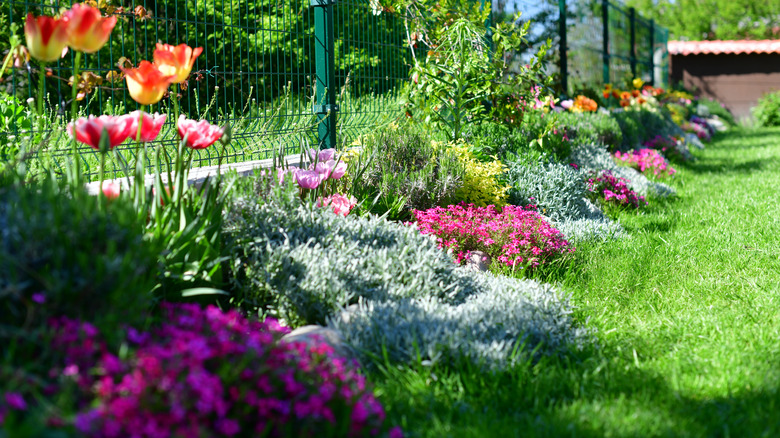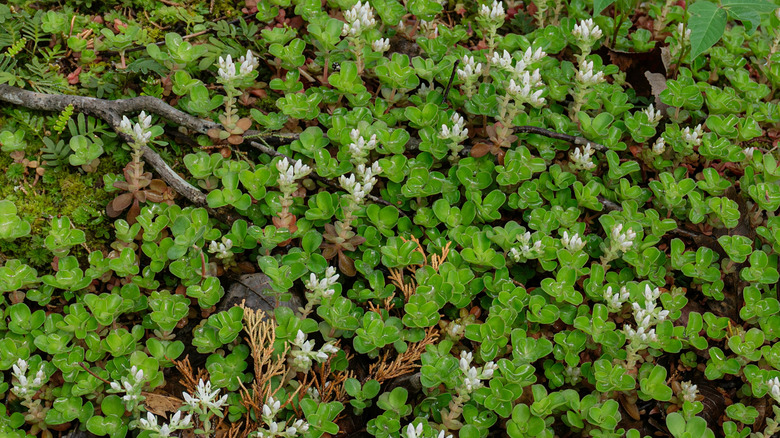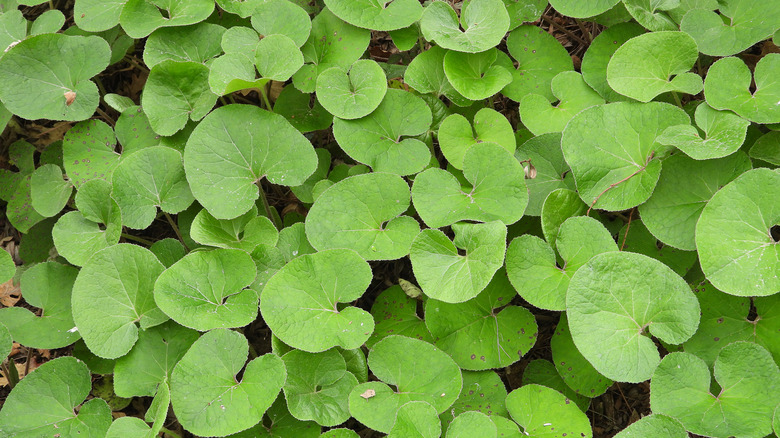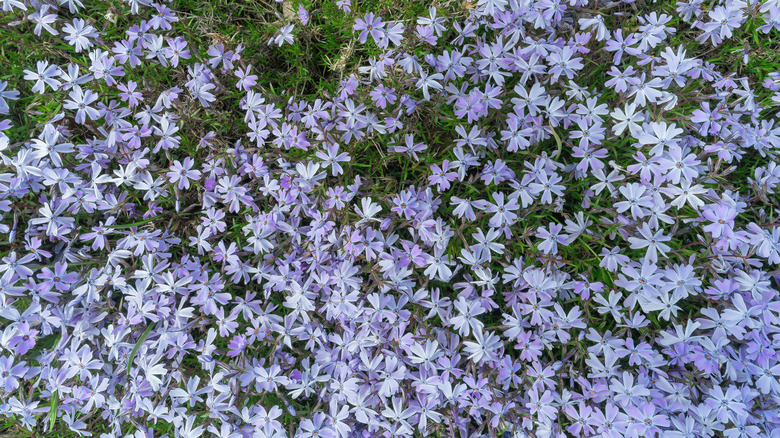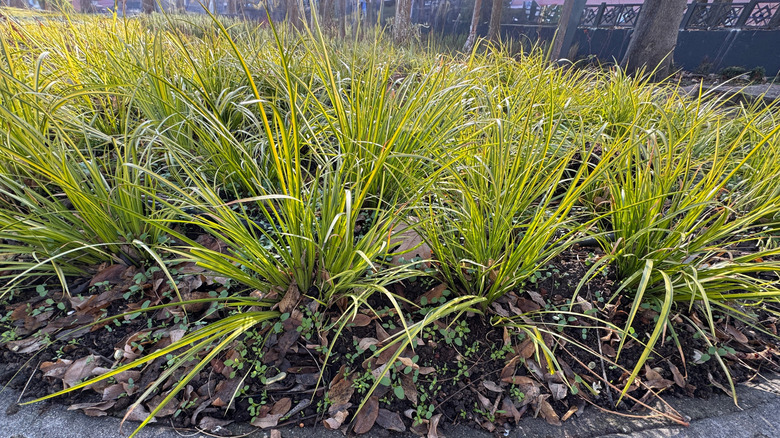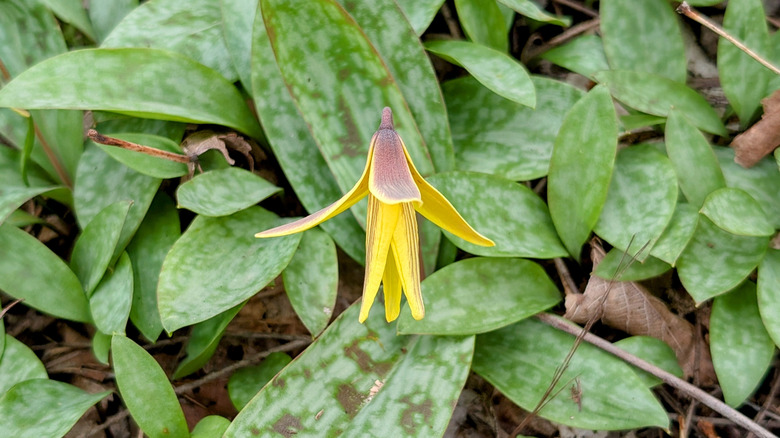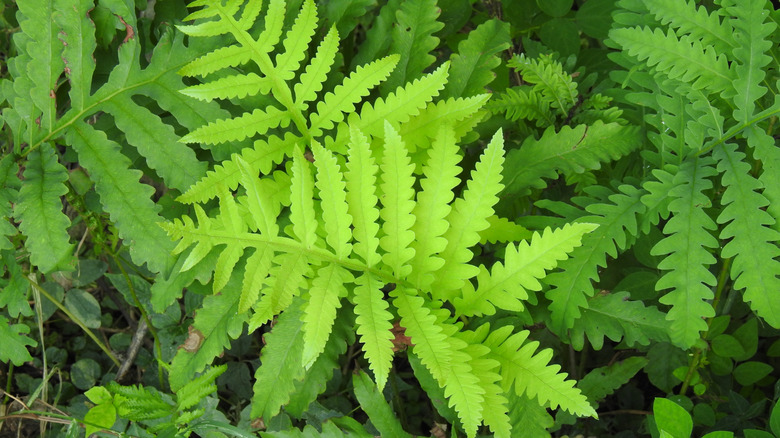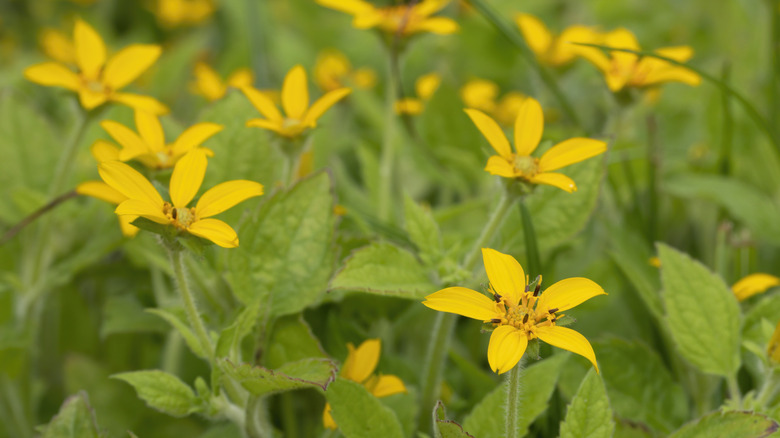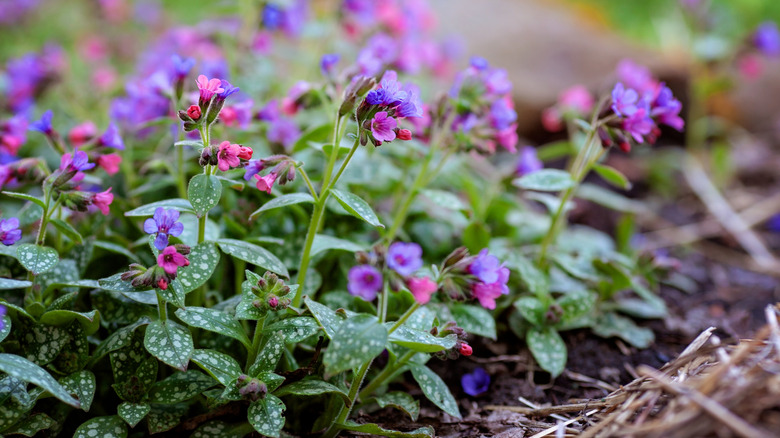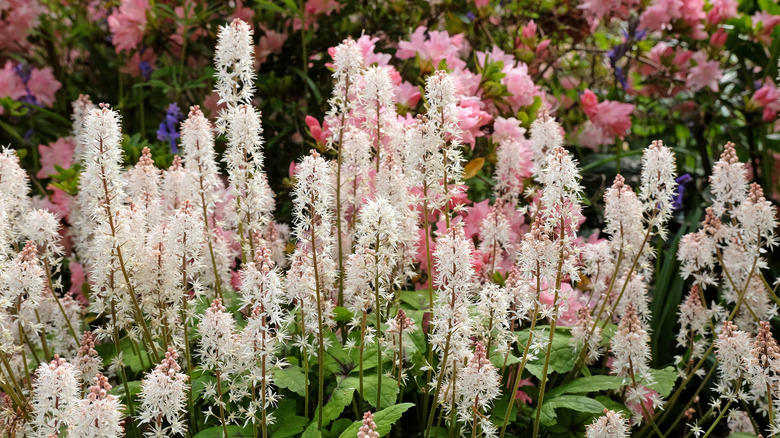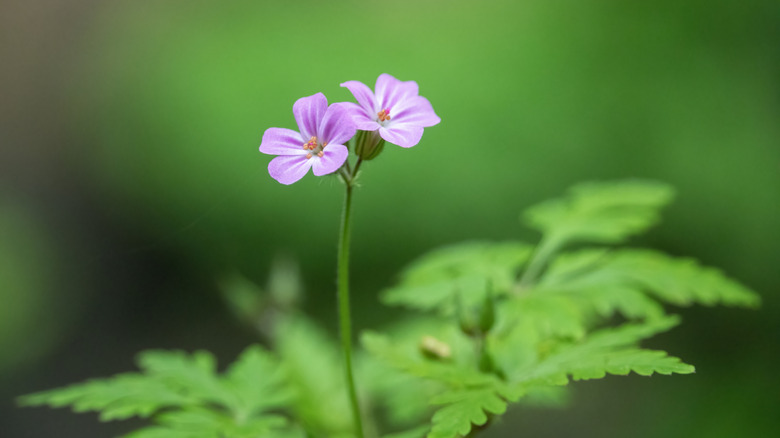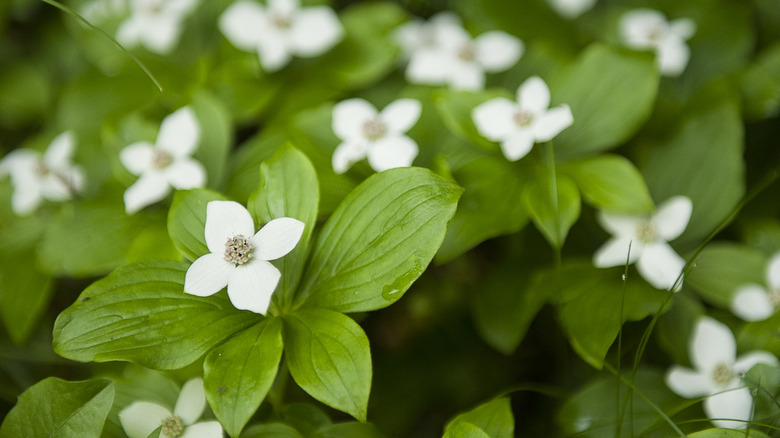12 Rain Tolerant Ground Covers That Can Help Soak Up Extra Rain In Your Yard
Ground cover plants can often be overlooked in favor of more prominent flowers, but properly incorporating ground cover throughout your yard is one of the best ways to make it look full and varied. Ranging from thickets of grass to brilliant clusters of flowers, the vast array of ground cover plants out there means there's one suitable for every garden, including those that receive a large amount of rain. Pairing rain-tolerant ground covers along with other plants well-suited for a rain garden is a surefire method to elevate your property.
A ground cover that loves the rain is good for more than just looking pretty — the right plant can also help reduce the amount of standing water a yard might receive by soaking up excess moisture. Additionally, ground cover can make damp, dark spots in a garden more attractive, oftentimes with minimal effort on your part. With options like phlox, starry campion, and more, it's simple to find a ground cover that will fit wonderfully in your garden.
Woodland stonecrop
Sedum ternatum, also known as mountain or woodland stonecrop, is a versatile succulent that's hardy in USDA zones 3 to 9. It can thrive in soil conditions ranging from moist to very dry and can take anywhere from zero to eight hours of direct sunlight a day. Along with its vibrant green foliage, woodland stonecrop has delicate, star-shaped white flowers that add even more visual interest to this ground cover. Regardless of the weather, this low-maintenance perennial makes for an excellent ground cover in both rocky and lush gardens.
Canadian wild ginger
For a luscious ground cover that can tolerate high amounts of both rain and shade, look to Canadian wild ginger (Asarum canadense). Native throughout North America, this deep green plant is hardy in zones 4 to 6, and is a subtle way to fill up a yard with more foliage. Wild ginger will not withstand a lot of sun or dry soil, so it's best for the shady, damp corners of a garden. If you live somewhere that sees a lot of rainfall, Canadian wild ginger will be extremely easy to care for.
Blue phlox
Another water-loving perennial native to the U.S. is blue phlox (Phlox divaricata). Blue phlox, particularly cultivars like 'Blue Moon,' does best in perpetually moist soil and full shade throughout hardiness zones 3 to 8. But despite its preference for damp conditions, phlox can still become drought-tolerant once established. It can also thrive in a variety of soil textures, which makes the wildflower a hassle-free option for countless garden styles. When in bloom, phlox can turn any section of the yard into a blanket of blue flowers, adding a pop of color to rainy yards.
Grassy-leaved sweet flag
Acorus gramineus, aka grassy-leaved sweet flag, is notable for its tufts of long, shiny leaves. The plant grows naturally in waterlogged soil and won't suffer from too much rain. It's hardy in zones 6 to 9 and can withstand both partial and full sunlight, so long as its roots stay submerged. Sweet flag's plume-like leaves are perfect for adding texture to ground cover and can grow without trouble when planted along a pond or stream or in a water garden. With proper care, it can also be a good way to incorporate indoor foliage into your home.
Trout lily
The plant scientifically referred to as Erythronium americanum goes by many evocative common names, including adder's tongue, trout lily, and dog-tooth violet. No matter what you call it, when planted in moist, shady conditions, this perennial ground cover will thrive in hardiness zones 3 to 8. The trout lily grows in thickets of broad green leaves that produce a single yellow, drooping flower. These eye-catching blooms make the trout lily a good option to use as a border for a garden plot or other ground cover. Under the proper conditions, these wildflowers should require very little outside help.
Sensitive fern
To give your lawn a forested, thoughtfully overgrown feel, plant a swath of sensitive fern (Onoclea sensibilis). Growing hardy in zones 2 to 10, this native ground cover loves damp, shady conditions. In fact, it gets its name from being highly sensitive to dry conditions. It does best in moist, well draining soil, where it will create a dense thicket of shrubby, spiky leaves. Whether you use it as ground cover in an empty corner of your yard or as a base for a rain garden, sensitive fern will thrive.
Mexican petunia
A similarly tall-growing ground cover is the Mexican petunia (Ruellia simplex). Growing around 4 feet tall, it has shrubby foliage with spiky green leaves and a spattering of small, lavender flowers. While it can grow well in a container, its preference for moist or even wet soil and a variety of sun conditions make it excellent for prettying up the corners of your garden that tend to collect excess water. Give it plenty of space to spread out, and Mexican petunia can colorfully fill garden spaces through zones 8 to 10.
Green and gold
The round, deep green leaves of green and gold (Chrysogonum virginianum) make it an excellent ground cover, especially in smaller garden plots where you can more easily plant multiple close together. This native plant is super hardy in zones 5 to 9. Along with soaking up endless rain, green and gold is also drought tolerant. Plant it in full or partial shade in moist or dry soil to get it to bloom a score of buttery yellow flowers. Use strategically as a ground cover along walkways or garden walls to add some easy-growing cheer to your lawn.
Lungwort
Oftentimes when praising how a plant looks, most of the focus goes to its flowers, not its foliage. However, plants like lungwort (Pulmonaria officinalis) prove that leaves can be just as stunning as petals. Lungwort has broad, deep green leaves spotted with whitish splotches and tiny, trumpet-shaped pink and purple flowers, adding up to a truly remarkable ground cover. Luckily, this unique plant is easy to maintain in hardiness zones 3 to 8. It prefers full or partial shade, and can take a lot of rain in loose, moist soil.
Foamflower
Foamflower, or Tiarella cordifolia, can grow under heavy shade in zones 3 to 8, and prefers moist, forest-like conditions. It can create a thick ground cover of bright green leaves with countless cone-shaped clusters of tiny white flowers. Since it is so tolerant of the shade as well as moist soil, foamflower can nicely fill in the gaps under and between larger plants without suffering from a lack of sun. Along with doing well in rainy areas, foamflower is also a good pick when growing a flourishing shade garden.
Wild geranium
You might see wild geranium (Geranium maculatum) growing along water features in the wild, which shows how well this wildflower tolerates high amounts of moisture. Growing hardy in zones 3 to 11, wild geranium can thrive in a number of conditions, including wet soil and partial shade. It's a spreading perennial, and can effortlessly add volume to any garden plot or lawn with its sprawling expanse of sharp, broad green leaves and adorable light purple flowers. To add more color to the foliage, try a cultivar with blue flowers like 'Elizabeth Ann,' or one with white flowers like 'Album.'
Bunchberry
Cornus canadensis, also called bunchberry or creeping dogwood, is a low-growing ground cover that thrives in cool, rainy climates. Native to forests throughout North America, bunchberry is a spreading plant that grows to form a carpet of broad green leaves dotted with small white flowers. Bunchberry grows in USDA hardiness zones 2 to 6, and prefers consistently moist, well-drained soil. It does best in full or partial shade, and in fact suffers in especially hot or dry climates. This perennial ground cover also produces edible fruit which, while lacking a strong taste, can still make bunchberry a great addition to edible, shady gardens.
